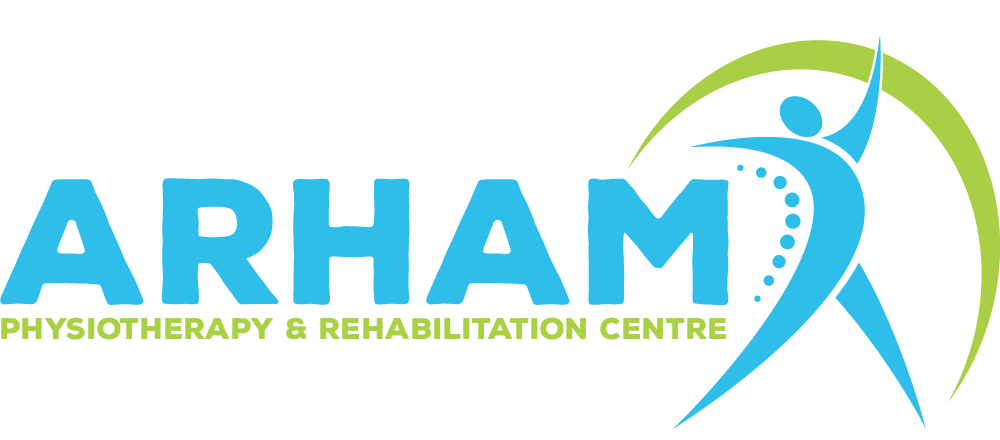Physiotherapy Techniques for Managing Chronic Headaches and Migraines
Understanding Headaches and Migraines
Headaches and migraines can significantly impact daily life and quality of life. Differentiating between various headache types, understanding their causes and triggers, and exploring physiotherapy’s role in management are essential steps toward finding relief. This article provides valuable insights into headache and migraine management through physiotherapy approaches.
Differentiating Between Tension Headaches, Migraines, and Other Types of Headaches
Tension headaches typically involve a dull, achy pain around the head, while migraines are characterized by intense, throbbing pain often accompanied by nausea and sensitivity to light and sound. Other headache types, such as cluster headaches or cervicogenic headaches, have distinct features. Identifying the specific headache type is crucial for appropriate treatment and management.
The Causes and Triggers of Chronic Headaches and Migraines
Chronic headaches and migraines can have various causes and triggers. These may include stress, hormonal fluctuations, certain foods, sleep disturbances, or postural imbalances. Identifying individual triggers is essential for developing effective management strategies and reducing the frequency and intensity of headaches and migraines.
The Impact of Headaches and Migraines on Daily Life and Quality of Life
Headaches and migraines can significantly impact daily activities, work productivity, and overall quality of life.
Physiotherapy is one of the best ways to improve daily functioning for you with headaches and migraines and it works as a very effective strategy.

Role of Physiotherapy in Headache and Migraine Management
Physiotherapy is a valuable approach to managing headaches and migraines. By incorporating various techniques, exercises, and relaxation methods, physiotherapists can provide relief, reduce pain frequency and severity, and improve overall well-being.
How Physiotherapy Can Complement Medical Interventions for Headaches and Migraines
Physiotherapy works synergistically with medical interventions for headaches and migraines. While medications address the symptoms, physiotherapy focuses on addressing underlying causes and triggers through targeted exercises, manual therapy, and relaxation techniques. This integrated approach enhances the effectiveness of treatment, reduces reliance on medication, and provides long-term relief.
The Goals and Benefits of Physiotherapy in Reducing Headache Frequency and Severity
The goals of physiotherapy in headache and migraine management include reducing pain frequency, intensity, and duration, improving function and quality of life, and empowering individuals to self-manage their condition. Physiotherapy offers numerous benefits, including improved posture, enhanced muscle balance, stress reduction, increased relaxation, and improved movement patterns.
Collaborative Approaches Between Physiotherapists and Other Healthcare Professionals in Headache Management
Collaboration between physiotherapists, neurologists, and other healthcare professionals is crucial for comprehensive headache management. This collaboration ensures holistic care, better outcomes, and improved overall well-being for individuals with headaches and migraines.
Assessment and Diagnosis of Headache and Migraine Patterns
Physiotherapists assess and diagnose headache and migraine patterns by evaluating triggers, associated symptoms, and postural imbalances. They use techniques such as clinical examination, patient history, and observation to develop an individualized treatment plan.
Evaluating Headache and Migraine Patterns, Triggers, and Associated Symptoms
Physiotherapists evaluate headache and migraine patterns by assessing the frequency, duration, intensity, and specific triggers. They also consider associated symptoms such as neck pain, muscle tension, and visual disturbances. This comprehensive evaluation provides insight into the underlying causes and guides the development of a personalized treatment approach.
Techniques Used by Physiotherapists to Assess Postural Imbalances
Physiotherapists use different techniques to check postural imbalances, muscle tension, and movement patterns related to headaches and migraines. These techniques may include observing posture and movement, palpation of muscles, assessing joint mobility, and evaluating muscle strength and flexibility. This assessment helps identify areas of dysfunction and guide targeted interventions.
Utilizing Patient History and Clinical Examination to Develop an Individualized Treatment Plan
By combining patient history and clinical examination findings, physiotherapists develop an individualized treatment plan for headache and migraine management. This plan may include manual therapy techniques, exercises, relaxation techniques, lifestyle modifications, and ergonomic recommendations. Tailoring the treatment plan to the individual’s needs ensures optimal outcomes and improves their ability to self-manage their condition.

Manual Therapy Techniques for Headache and Migraine Relief
Physiotherapists employ various manual therapy techniques to provide headache and migraine relief. These techniques include soft tissue mobilization, joint mobilization and manipulation, and myofascial release. By addressing muscle tension, joint dysfunction, and fascial restrictions, manual therapy can alleviate pain and improve overall function.
Soft Tissue Mobilization Techniques to Release Muscle Tension and Reduce Trigger Points
Soft tissue mobilization techniques, such as massage or myofascial release, are used by physiotherapists to release muscle tension and reduce trigger points associated with headaches and migraines. These techniques improve blood circulation, relieve muscle tightness, and reduce pain.
Joint Mobilization and Manipulation to Address Neck and Upper Back Dysfunctions Associated with Headaches
Physiotherapists use joint mobilization and manipulation techniques to address neck and upper back dysfunctions commonly associated with headaches. By restoring joint mobility, reducing muscle tension, and improving alignment, these techniques alleviate pain and improve function.
Myofascial Release Techniques to Alleviate Fascial Restrictions and Improve Circulation
Myofascial release techniques are employed by physiotherapists to release fascial restrictions and improve circulation in the affected areas. These techniques help reduce pain and tension associated with headaches and migraines, improve tissue mobility, and restore optimal function.
Exercise and Stretching for Headache and Migraine Management
Exercise and stretching play a vital role in headache and migraine management. They help improve posture, reduce muscle imbalances, enhance cervical stability, and promote relaxation in the upper body.
Neck and Shoulder Exercises to Improve Posture and Reduce Muscle Imbalances
Specific exercises targeting the neck and shoulder muscles can improve posture, reduce muscle imbalances, and alleviate headache and migraine symptoms. These exercises may include neck stretches, shoulder retractions, and scapular stabilizing exercises.
Strengthening Exercises to Enhance Cervical Stability and Support
Strengthening exercises targeting the cervical spine and associated muscles can enhance stability, support proper posture, and reduce the occurrence of headaches and migraines. Examples include deep neck flexor exercises and scapular stabilization exercises.
Stretching Routines to Release Tension and Promote Relaxation in the Upper Body
Regular stretching routines focused on the upper body, including the neck, shoulders, and upper back, can help release tension, reduce muscle tightness, and promote relaxation. Stretching exercises like neck stretches, shoulder rolls, and upper back stretches can alleviate muscle tension and reduce the frequency and severity of headaches and migraines.
Relaxation Techniques and Mind-Body Approaches
Incorporating relaxation techniques and mind-body approaches can help manage headaches and migraines. Techniques like deep breathing exercises and mindfulness practices reduce stress and promote relaxation, which can alleviate headache symptoms.
Breathing Exercises and Mindfulness Techniques to Reduce Stress and Anxiety
If you want to reduce stress and anxiety, deep breathing exercises and mindfulness techniques are very effective and they are common triggers for headaches and migraines. These practices promote relaxation, improve oxygen flow, and help individuals manage their symptoms more effectively.
Guided Imagery and Progressive Muscle Relaxation for Headache and Migraine Relief
Guided imagery and progressive muscle relaxation techniques have shown promising results in relieving headache and migraine symptoms. By focusing on calming mental images and systematically relaxing muscle groups, individuals can experience relief from pain and tension associated with headaches and migraines.
Incorporating Relaxation Techniques into Daily Routines for Long-Term Management
To effectively manage headaches and migraines, it’s important to incorporate relaxation techniques into daily routines. By setting aside dedicated time for relaxation exercises, individuals can reduce stress levels, promote overall well-being, and prevent future headache episodes.

Education and Lifestyle Modifications
Educating patients about headache and migraine triggers and how to manage them is crucial. Lifestyle modifications, such as improving posture, implementing ergonomic adjustments, and prioritizing quality sleep, can also help reduce the frequency and intensity of headaches and migraines.
Educating Patients About Headache and Migraine Triggers and How to Manage Them
Providing patients with information about common headaches and migraine triggers, such as stress, certain foods, and sleep disturbances, empowers them to make informed choices and adopt effective strategies for prevention and management.
Ergonomic Adjustments in the Workplace and at Home to Support Good Posture and Reduce Headache Triggers
Making ergonomic adjustments in the workplace and at home, such as setting up proper desk ergonomics, using supportive chairs, and optimizing lighting conditions, can support good posture and reduce headache triggers. These modifications minimize strain on the body and create an environment conducive to headache prevention.
Sleep Hygiene and Strategies for Improving Sleep Quality to Prevent Headaches and Migraines
Maintaining good sleep hygiene, including establishing a consistent sleep routine, creating a comfortable sleep environment, and practicing relaxation techniques before bedtime, can significantly reduce the occurrence of headaches and migraines. Quality sleep plays a vital role in preventing headache episodes.
Collaborative Care and Multidisciplinary Approach
Collaboration between physiotherapists, neurologists, and other healthcare professionals is essential in managing chronic headaches and migraines, ensuring comprehensive care and better treatment outcomes.
Coordinating Care Between Physiotherapists, Neurologists
The best way to get relief from chronic headaches and migraines is to coordinate with physiotherapists, neurologists, and the rest healthcare professionals. This collaboration allows for comprehensive assessment, treatment, and management, resulting in improved symptom management and enhanced overall well-being.
Integrating Physiotherapy Techniques with Medication Management and Other Interventions
Integrating physiotherapy techniques, such as manual therapy, exercises, and relaxation strategies, with medication management and other interventions optimizes treatment outcomes for individuals with headaches and migraines. This combined approach addresses both the underlying causes and symptom relief, leading to better long-term management.
The Benefits of a Comprehensive, Multidisciplinary Approach in Improving Headache and Migraine Outcomes
A comprehensive, multidisciplinary approach that combines physiotherapy, medication management, and other interventions offers significant benefits in improving headache and migraine outcomes. By addressing various aspects of the condition, individuals receive personalized care that targets the root causes, reduces symptoms, and enhances their overall quality of life.
Also Read: Easing Knee Pain Through Movement
Final Thoughts on Headaches and Migraines
Headaches and migraines can significantly impact daily life, but with proper management techniques, relief is possible. Understanding the different types of headaches, their causes, and triggers is crucial for effective treatment. Physiotherapy plays a valuable role in headache and migraine management by offering a range of techniques, including manual therapy, exercises, relaxation methods, and postural assessments. By working collaboratively with other healthcare professionals, physiotherapists provide comprehensive care and improve treatment outcomes. Incorporating lifestyle modifications, such as ergonomic adjustments and relaxation techniques, further supports headache prevention.
FAQs
What Can Trigger Migraines?
Migraine triggers can include stress, certain foods, hormonal changes, lack of sleep, and sensory stimuli.
Can Physiotherapy Help with Headache and Migraine Management?
Yes, physiotherapy techniques such as manual therapy, exercises, and relaxation methods can be effective in reducing headache frequency and severity.
How Often Should I Do the Exercises and Stretches?
Aim for at least 2-3 sessions per week, but consistency is key.
Is Collaboration with Other Healthcare Professionals Important in Headache Management?
Yes, collaborative care involving physiotherapists, neurologists, and other professionals ensures a comprehensive approach and better treatment outcomes.

Pingback: How to Prevent Accidental Fractures
Pingback: The Ultimate Guide to Weight Loss Management: Tips and Tricks
Pingback: How Physiotherapy Helps Osteoarthritis of The Knee